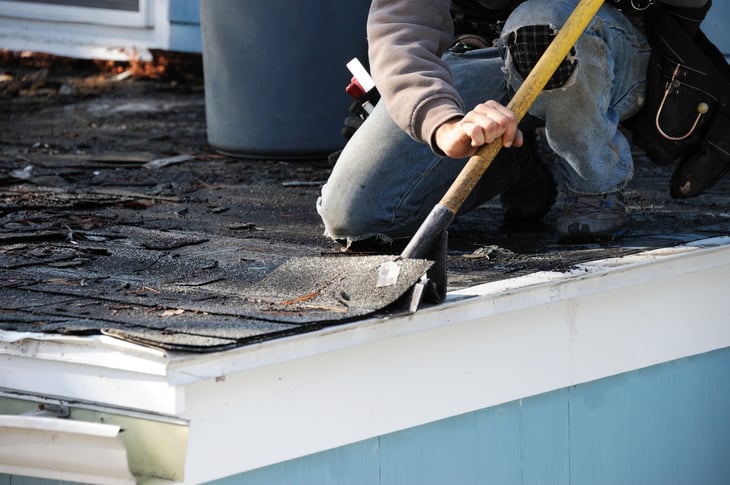
Editor's Note: This story originally appeared on Point2.
Since the dawn of humankind, having a sturdy roof over our heads has always been important.
Nowadays, our roof systems might be more complicated than those of our cave-dwelling ancestors, but maintaining, repairing and knowing when to replace them is just as essential as ever.
However, knowing when your roof needs fixing or replacing can be tricky for anyone not working for a professional roof repair company. Often, such work is left until it’s too late, resulting in costly emergency roof repairs.
It’s not all bad news, though. With a bit of know-how, you can learn how to prolong the life of your roof and, when the time does come to replace it, how to spot the early warning signs. Let’s find out more.
6 Roof Maintenance Tasks To Keep Your Roof in Top Shape
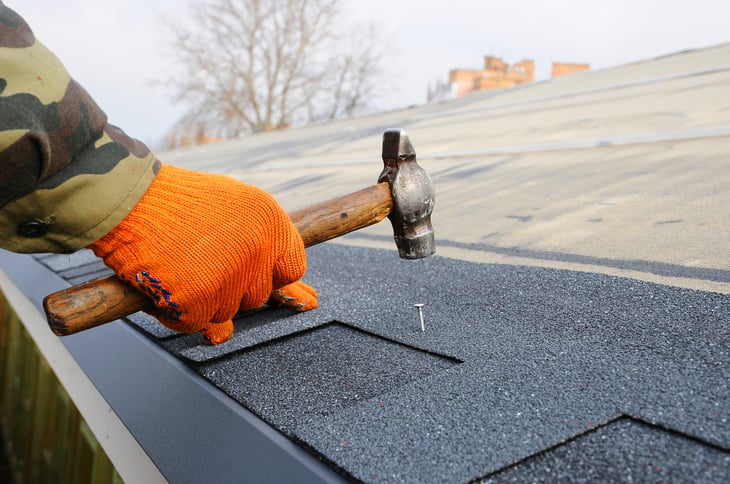
The key to prolonging anything is regular maintenance and learning to spot the early signs that can lead to big problems in the future.
Regarding roofs, it’s best to conduct inspections of the various components twice a year, typically before and after periods of severe weather. In North America, this means in the fall and spring.
Of course, the easiest way to do this is to hire a professional roofing firm to come and take a look.
However, if you want to save some cash, you’re a reasonably competent DIYer, and you can safely access your roof, it’s certainly possible to do it yourself. Here’s what to look out for.
1. Inside Damage

First, it’s essential to look in the attic for signs of interior damage caused by a damaged roof. Mold, mildew, peeling paint, visible leaks and drips, water stains on ceilings and walls, and rotting raters can all point to a leaky roof.
If you find such signs, it’s important to locate the source of the problem so you can carry out effective roof leak repairs.
2. Clutter on the Roof
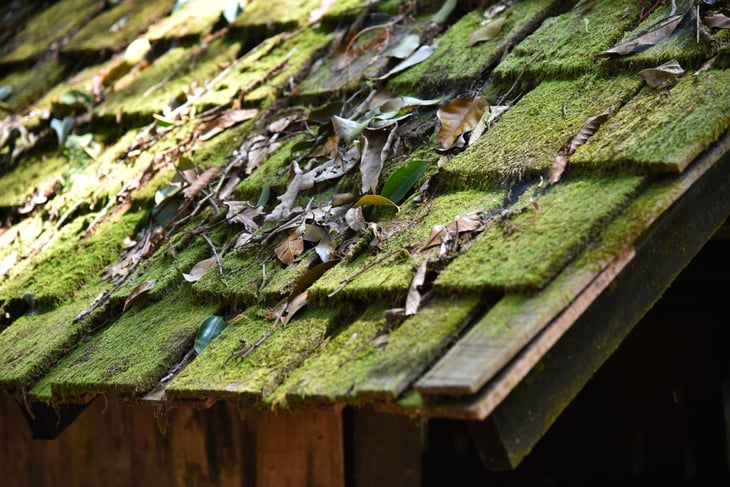
Mostly, you should look for debris, such as leaves and twigs, which can soon clog up your gutters. If this is the case, give your gutters a good clean-out.
Larger debris, such as tree branches, should also be removed before they’re able to damage membranes and other elements.
Damage to the Surface of the Roof
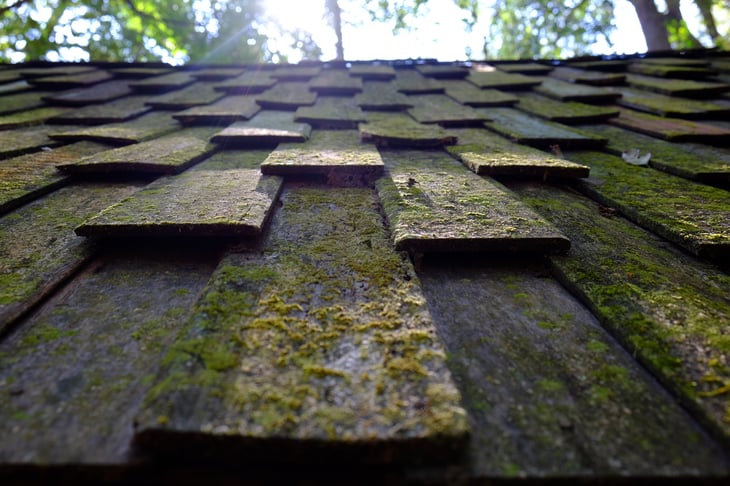
Once you’ve cleaned up the worst of the debris, it’s time to check the surface of your roof. Depending on what your roof is made from, there are numerous issues to look out for, including:
- Loose, damaged or missing shingles/tiles
- Corroded metal elements
- Bare spots in a gravel roof
- Dips in flat roofs
Additionally, check your roof surface for moss or fungus and remove them as soon as possible. Over time, these organisms can work their way through the roof and damage the membrane.
4. Distressed Flashings
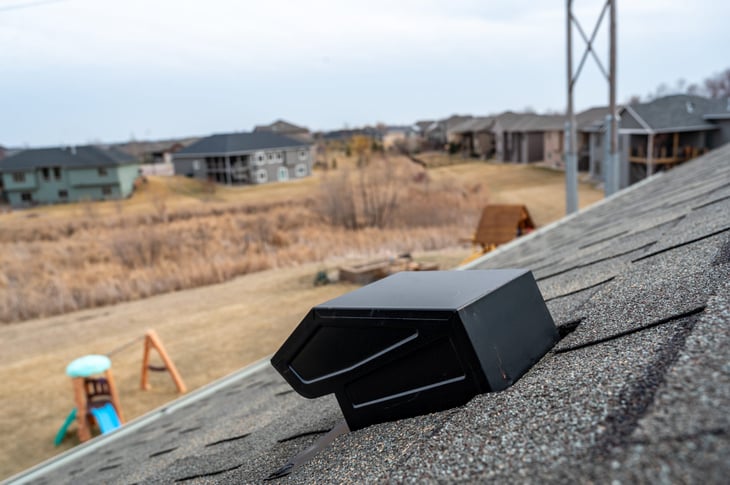
Flashings are placed around various roof elements, such as chimneys, skylights and vents.
Typically made of thin metal strips, they’re designed to direct water away from seams, joints, and other weak spots in your roof.
If they’re damaged in any way, such as pulling away from the roof and leaving gaps, you’ll soon have water making its way inside.
5. Examine the Roof Elements
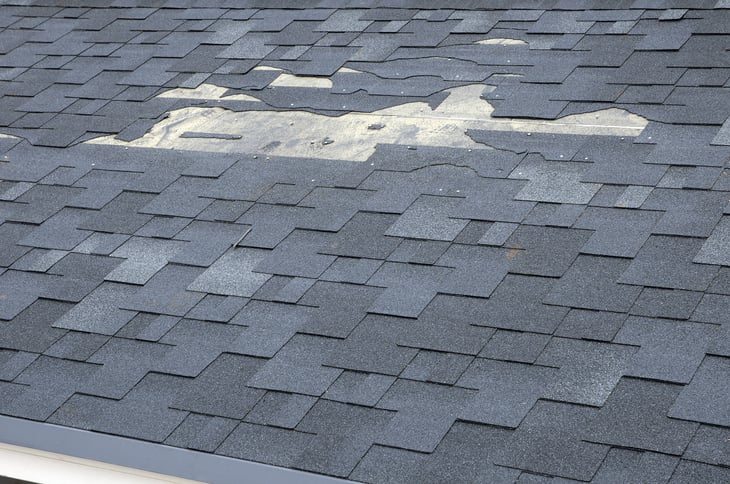
Take a good look at the various elements on your roof: chimneys, vents, skylights, etc. Check for cleanliness, rot, mold, rust, peeling paint, and other signs of distress.
Make a list of what needs treating and carrying out the necessary repairs and maintenance tasks.
If there are any signs of severe structural damage, such as missing parts, severe rot or warped metal, call a professional for a more thorough inspection.
6. Guttering
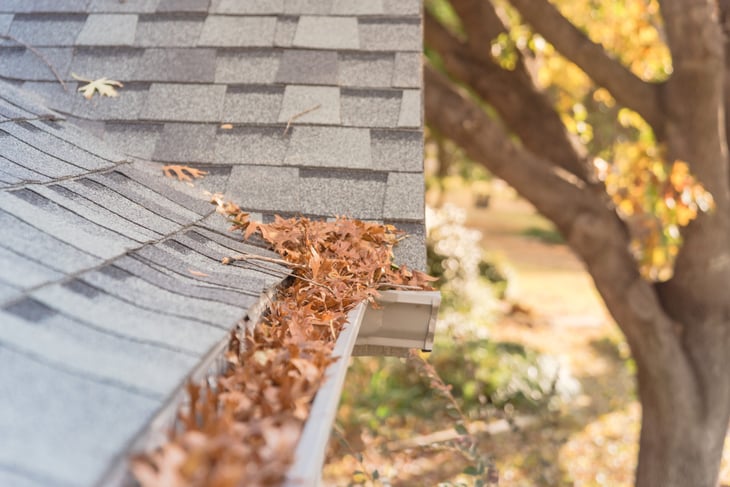
Look for sagging pipework, cracks, blockages and failing supports. If there’s any standing water in your gutters, it’s not pitched correctly.
This can be rectified by adjusting the supports to create the right slope. However, it can be tricky without scaffolding, and it might be worth consulting a professional.
5 Signs That Your Roof Needs Replacing
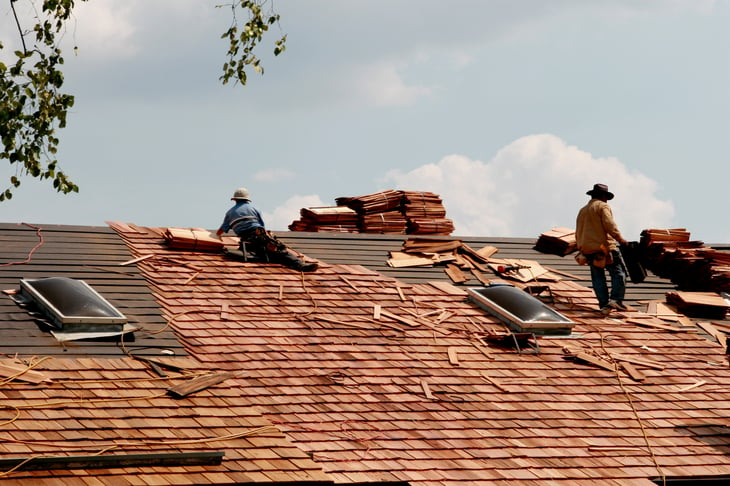
Even a well-maintained roof will eventually fail and need replacing as the various components reach the end of their lifespan. However, it doesn’t have to come as a nasty surprise.
1. Your Roof Is Getting Old
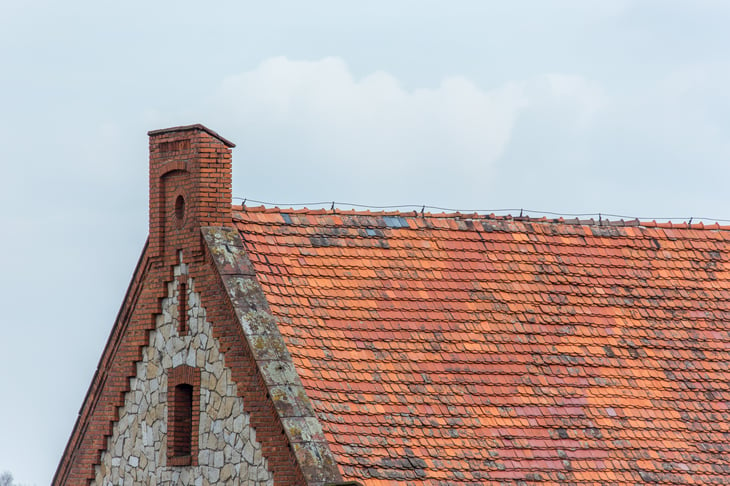
Generally speaking, a roof can be expected to last for anything from 15 to 50 years, depending on the materials used, the build quality, the frequency of maintenance, and the conditions it is subject to.
For example, roofs in cooler climates tend to last longer than those in hotter areas.
Here’s a rough idea of the average life expectancy of various roof systems:
- Asphalt shingles: 15 to 30 years
- Wood shingles: 25 to 30 years
- Metal: 20 to 50 years
- Architectural asphalt shingles: 30 to 50 years
- Composite tiles: 40 to 50 years
- Slate, clay, or concrete tiles: 50 years +
Be sure to check the age of your roof and have it inspected by a professional to get a good idea of how much longer you can expect it to last.
Another good indicator is if your neighbors are replacing their roofs. Most homes in a neighborhood are built around the same time, so if they change theirs, there’s a good chance you’ll soon need to replace yours.
2. Damaged Shingles or Tiles
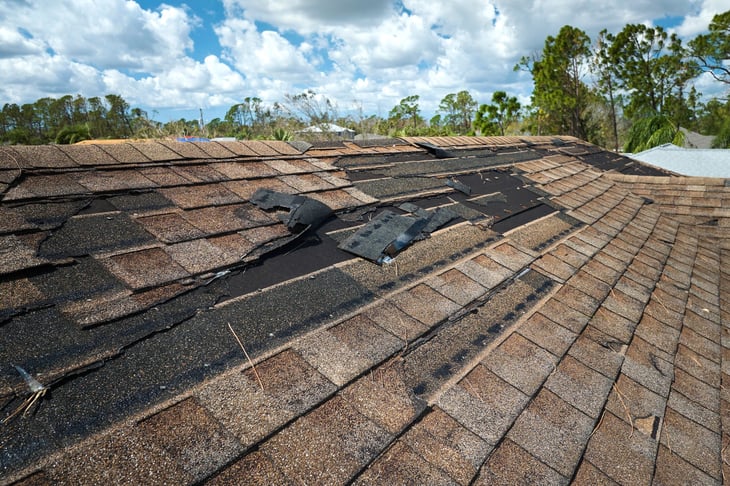
Both shingle and tile roofs can give several hints that they require replacing. Shingles that bulge in the center or curl at the edges suggest severe weathering problems and will soon result in leaks if they haven’t already.
If there are only one or two like this, it’s not usually a big issue, but entire sections should raise red flags.
Likewise, if you frequently carry out shingle roof repairs or tile roof repairs and notice a lot of cracked or missing shingles/tiles, the life of your roof is likely drawing to a close.
3. A Sagging Roof
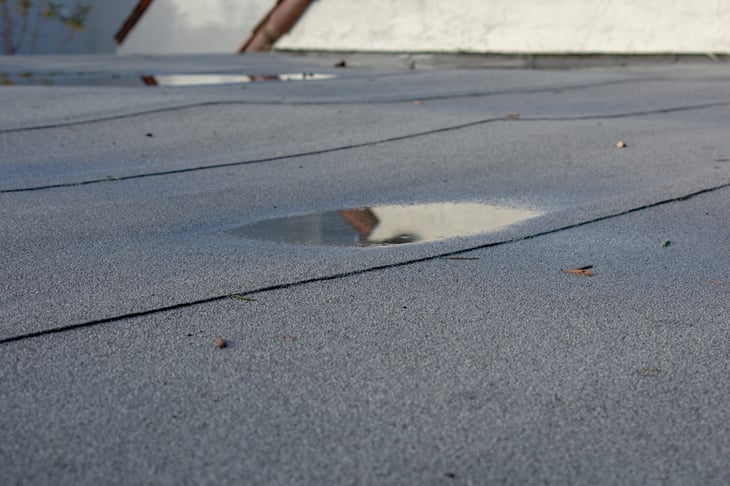
A sagging roof typically means severe structural issues and must almost always be replaced.
It’s important not to ignore the problem or delay repairs, so call the professionals as soon as you notice signs of sagging.
4. Increased Energy Bills

You don’t always need to go up and inspect your roof to know it’s time to have it looked at. Rising heating and cooling costs can often result from an ineffective roof in which the insulation has failed.
As a result, warm air quickly escapes in winter, meaning your HVAC system needs to work overtime.
Fortunately, this doesn’t always mean you’ll need to replace your roof entirely. Sometimes, you’ll only need to install new insulation and take care of any thermal bridges.
5. Major Leaks
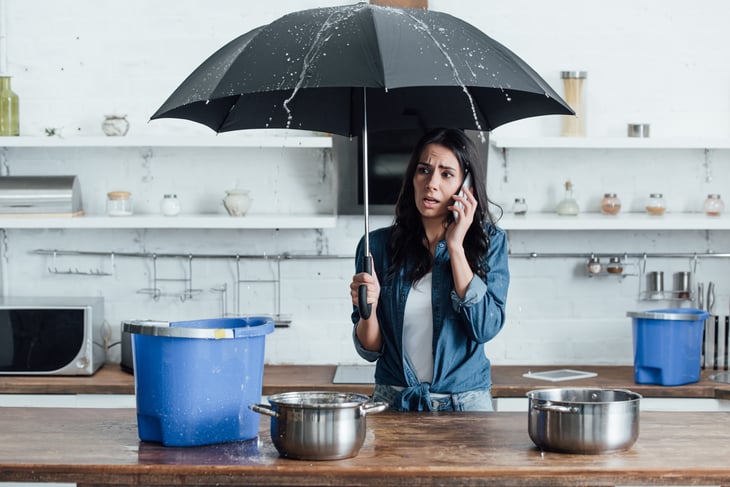
While you can prevent most leaks with regular maintenance, sometimes there’s a larger problem. Monitor water stains on your ceilings, walls, or in the attic — if they grow, there’s an active leak that needs to be taken care of.
If the membrane is compromised, you may need major roof repairs or even a full replacement.
How Much Does It Cost To Replace a Roof?

You might wonder what the average cost is to tear off and replace your roof. Roof repair costs vary widely depending on the type of roof you have, your location, the materials used, and the size of it.
As a rough guide, the average cost to replace a roof is anywhere between $5,700 to $16,000. For a more accurate figure, it’s worth using a roof replacement cost calculator.





Add a Comment
Our Policy: We welcome relevant and respectful comments in order to foster healthy and informative discussions. All other comments may be removed. Comments with links are automatically held for moderation.